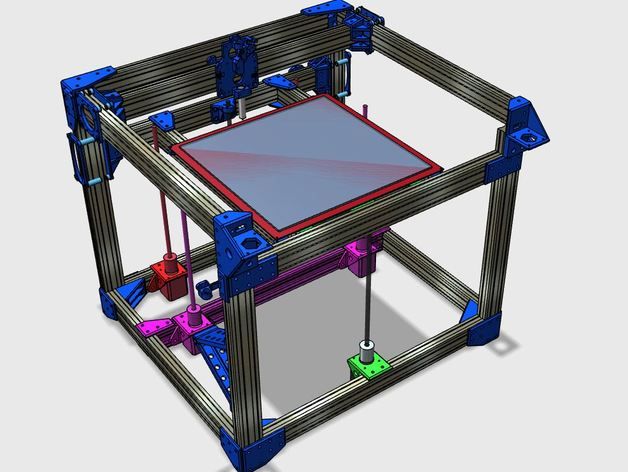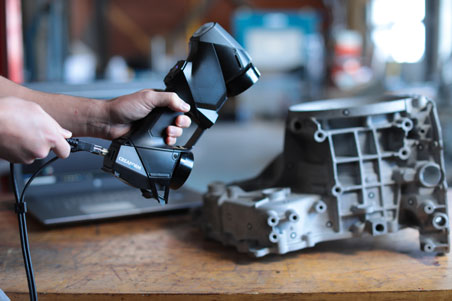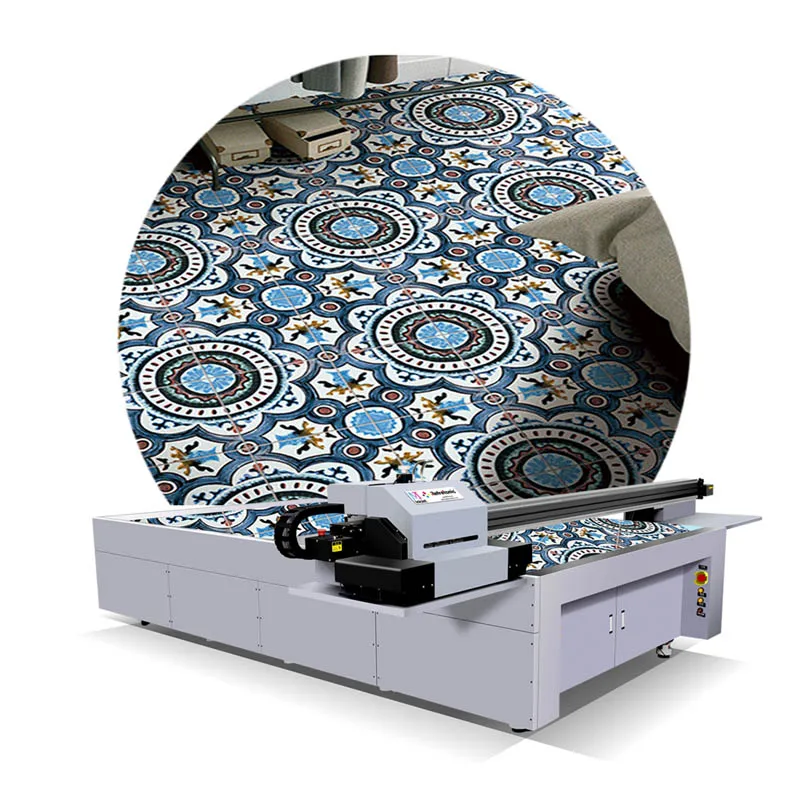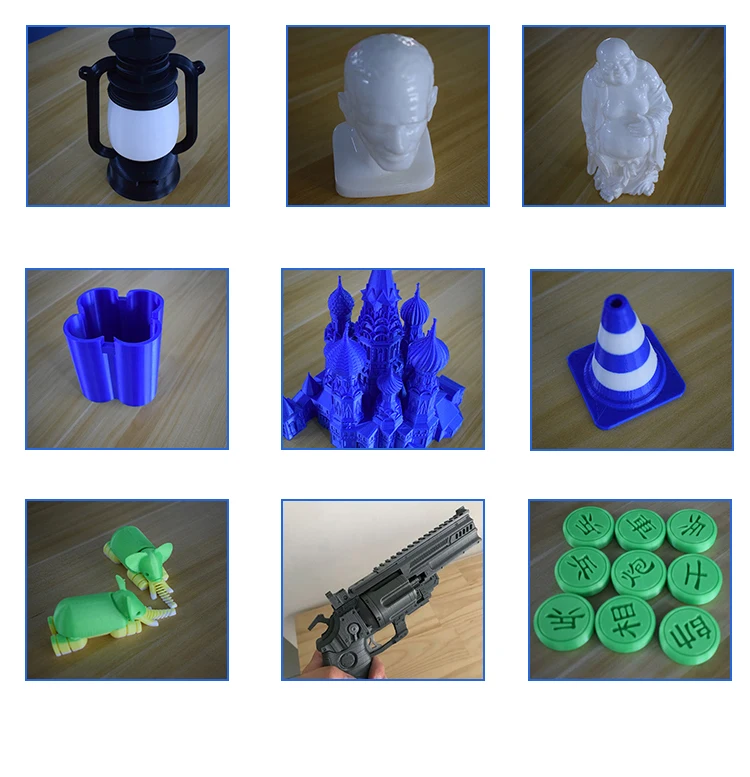Cam software 3d printing
What’s the Difference between CAD/CAM and 3D Printing?
Skip to content
- August 12, 2022
- Michelle Nemeth
- Posted in General
NC code, CNC machines, G-code, CAD software, CAM software, 3D printing – even a quick dive into manufacturing will bombard you with terms like these. But what do they mean, and are they connected? This blog will piece apart three of the most commonly used terms in production circles today: CAD, CAM, and 3D printing. First, let’s define the three:
- CAD: computer-aided design; software that crafts virtual models of parts and part assemblies that will later be manufactured.
- CAM: computer-aided manufacturing; software that directs the actual manufacturing of said part(s) by communicating with a numerically controlled (NC) manufacturing machine.
- 3D printing: the process of building parts by laying material on a base or on other material in a predetermined motion.
Just knowing their definitions isn’t enough, though. Let’s look at the relationships between and among these concepts.
CAD and CAM Working Together
CAD and CAM are used in tandem, but both are distinct types of software. CAD was created to automate the drafting of products. It is often used by designers to create renderings and drawings of models. These renderings can display the size, texture, shape, material, and general appearance of the designed part.
Instead of painstakingly drawing multiple two-dimensional diagrams by hand, ensuring that all of the measurements are correct, keeping careful track of the copies so that nothing is accidentally destroyed, and hoping that nothing is lost in translation, now designers generate models quickly and easily in their CAD programs.
When discussing CAD systems, CAM systems are often mentioned. CAM software – or computer-aided manufacturing software – builds NC code for CNC machines that produce parts.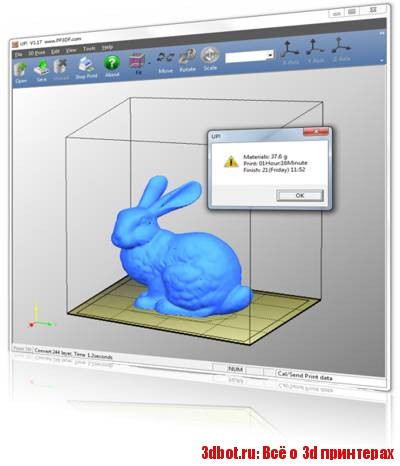 The software plans out and directs toolpath motion to achieve the most efficient manufacturing.
The software plans out and directs toolpath motion to achieve the most efficient manufacturing.
Milling, turning, routing, metal stamping, grinding, and laser cutting can all be supported by CAM. Some CAM systems come with their own CAD systems to make design and manufacturing more streamlined.
3D Printing and CAD/CAM
While an ink printer creates images by organizing layers of liquid ink on paper, a 3D printer creates three dimensional objects by organizing layers of molten plastics (or other materials) on top of each other. Just like with any machined part, a 3D printed part will be produced most efficiently when designed with CAD. 3D printers are subject to the instructions contained in the CAD model. They use this data to determine how much material to deposit and where exactly to deposit it.
After a part has been printed, engineers sometimes must go back in and machine the part. This is due to the fact that 3D printing is often not accurate enough to build parts that must meet tight tolerances.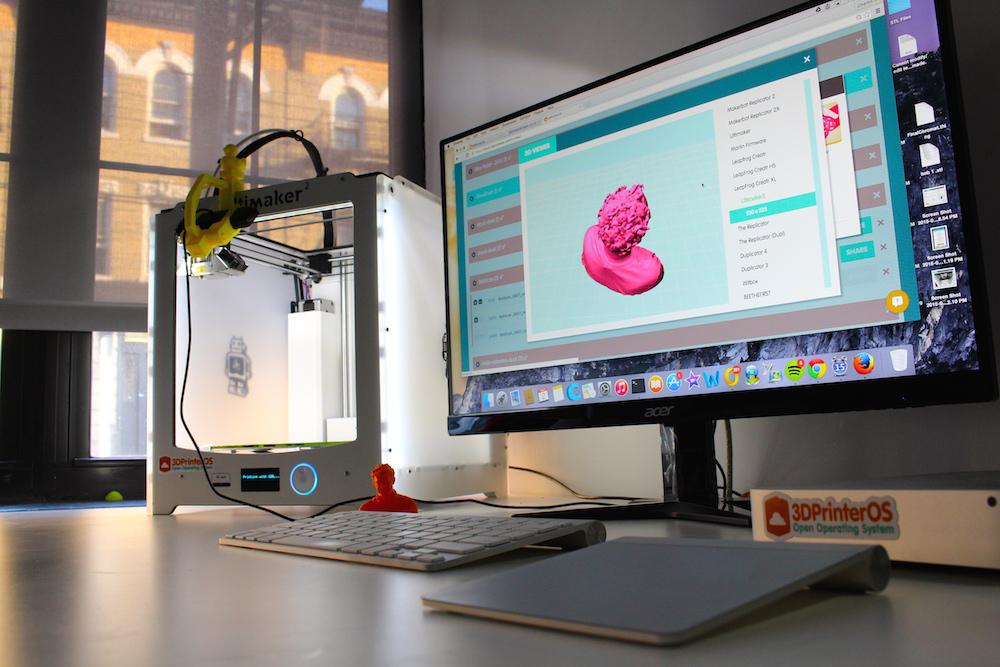
3D printed parts for the medical and aerospace industry, for example, are often not functional or safe immediately off the printer. Parts like these must be taken back into a CAD program for further modeling at the designated scale and then exported to a CAM program so that the machining aspect can be programmed. Usually, the machining is quick, focusing mainly on finishing toolpaths that turn out high quality surface finishes.
Overall, the main difference between CAD/CAM and 3D printing is 3D printing is a manufacturing process to make components, while CAD/CAM is the process of designing and manufacturing these components.
Give Mastercam a Try
Download a free trial version of Mastercam today to experiment with its CAD and CAM capabilities.
18 Best 3D Printing Software in 2023 [CAD Tools] • Filmmaking Lifestyle
3D printing is a process of making three dimensional solid objects from a digital file. It is also called additive manufacturing.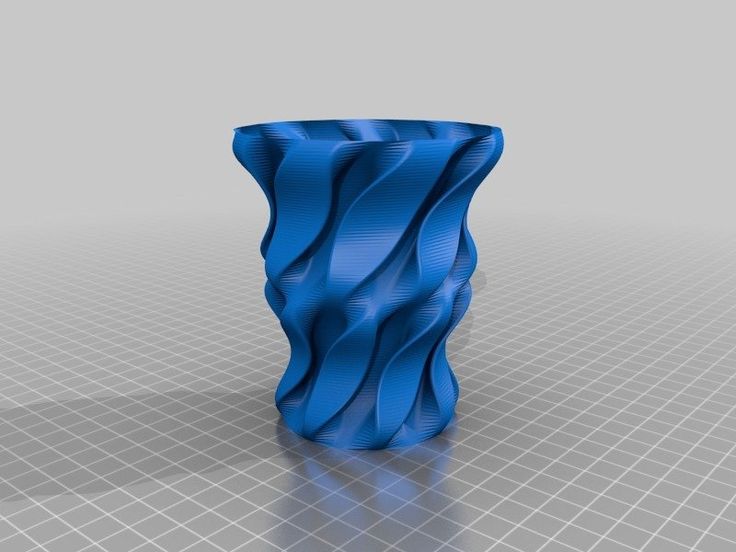
The word 3D printing has been used to describe a wide range of additive processes, in which material is added together to create an object.
3D printing (additive manufacturing) can make parts that are difficult or impossible to make with traditional machining. In this article, we will discuss about 3D printing software and its types.
3D printing software is a software that helps you in designing 3D models and then converting them into 3D printing files.
This software also allows you to edit, manipulate and optimize your model before sending it to the printer.
There are many types of software available on the market today. Each of them has its own unique features and may be suitable for different purposes.
3D printing software is basically used to convert a digital design into a physical object via a printer or other manufacturing machine.
You can use this software to create models that are complex in nature, such as tools and other equipment used in various industries.
It can also be used for entertainment purposes, such as creating toys for kids or even sculptures for decoration purposes.
Best 3D Printing Software: IntroductionWhat is the Best 3D Printing Software?1. Autodesk Fusion 360
Autodesk Fusion 360 is a cloud-based 3D CAD, CAM, and CAE platform for product development.
It combines industrial and mechanical design, simulation, collaboration, and machining in a single package.
The tools in Fusion 360 enable fast and easy exploration of design ideas with an integrated concept-to-production toolset.
It is the first 3D CAD, CAM, and CAE tool that connects your entire product development process in a single cloud-based platform that works on both Mac and PC.
Features3D modelling tools – Autodesk Fusion 360 provides 2D sketching tools to create 3D solids using either T-Splines or NURBS.
The toolset allows users to build parametric models that can be later modified easily and quickly.
Assembly modelling – The module allows users to work with multiple models in a single project.
It features an assembly navigator that helps users keep track of the project’s various components.
Users can create complex assemblies using the toolset and then simulate their behaviour in different environmental conditions.
Design analysis – Autodesk Fusion 360 has powerful design analysis tools that allow users to test their designs under various conditions.
Users can check for thermal expansion and contraction, strength, stress drop, vibration, etc.
The design may also be tested against specific material properties and be simulated in natural environmental conditions such as temperature or humidity.
CAM tools – Autodesk Fusion 360 includes CAM tools that allow designers to translate their models into machine code
ProsAutodesk Fusion 360 allows you to design and create on a single platform. It’s not just a 3D modelling tool.
It also allows you to do 2D drafting, simulation and animation.
Autodesk Fusion 360 is an excellent solution for startups because it allows you to be agile and dependent while scaling your business.
You can use it on any device – Mac or PC. It can do 3D modelling and 2D drafting.
It is great for startups because of its friendly pricing model and Tight integration with Autodesk Eagle PCB.
There’s an active community of users who can help you learn!
2. Autodesk AutoCADAutodesk® AutoCAD® 360 — the official AutoCAD® mobile app. Take the power of AutoCAD wherever you go!
AutoCAD 360 is a freeDWG viewing application with easy-to-use drawing and drafting tools that allow you to view and measure AutoCAD drawings across web and mobile devices – anytime, anywhere.
Simplify your site visits with the most powerful drafting and editing tool available—Drawing Viewing Open and view.
DWG files directly from email or external storage.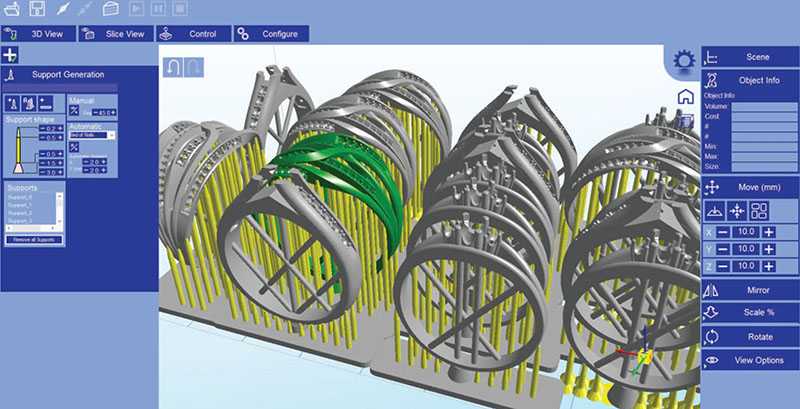 Review drawings at every stage of a project—at the office, in the field, or on the go.
Review drawings at every stage of a project—at the office, in the field, or on the go.
Navigate large drawings easily using Multi-Touch zoom, pan and 3D orbit.
You can also switch to 2D wireframe mode for faster performance on complex geometry or when working with large assemblies of blocks or refs.
Editing Drawing Create new drawings on your mobile device and continue working on your design seamlessly across platforms.
Add text notes to your drawing mark-ups directly on your portable device, or attach voice notes to individual drawing elements.
Easily mark up drawings using drawing markup features such as Line, Circle, Polyline, Arrow and more to highlight areas of concern in a
FeaturesAutodesk AutoCAD features include an updated modern interface that improves the design process and productivity enhancements that help speed your work.
Intuitive user interface A modern, updated interface optimises the design process.
The new dark theme is more accessible to the eyes, and many time-saving enhancements speed up daily tasks.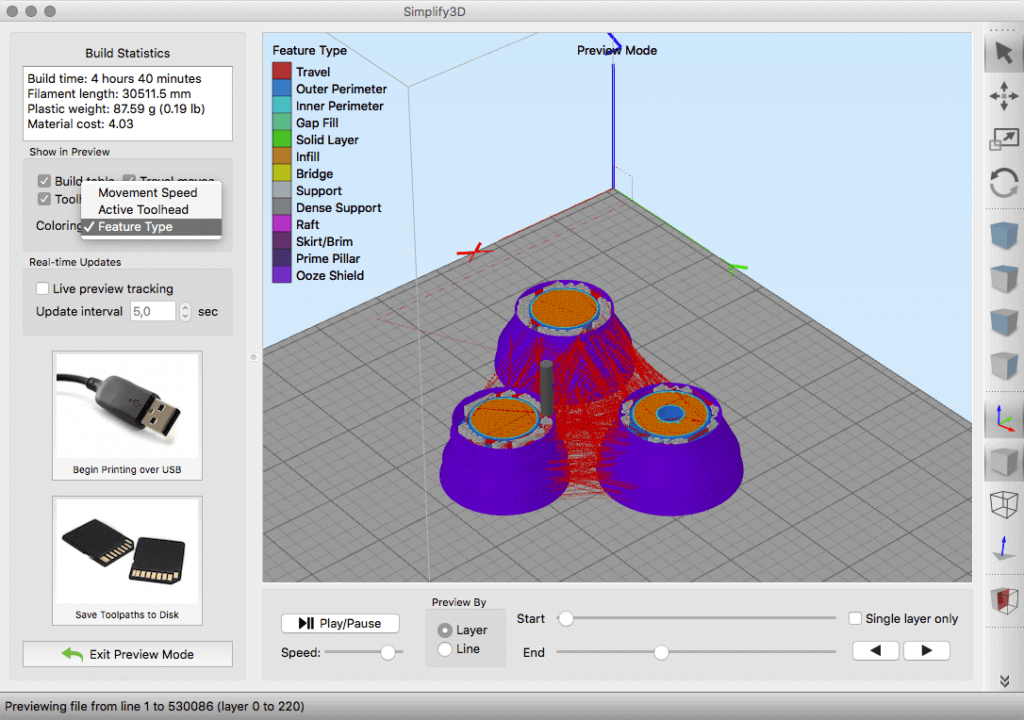
Collaboration tools Share models and work with stakeholders more efficiently by publishing, viewing, and commenting on designs with the AutoCAD web and mobile apps.
Creation and annotation of 3D models
Create industry-standard CAD drawings with a complete set of drawing, editing, annotation, and sharing tools.
Customisation and automation
Use one of the many available add-on applications to expand your software’s capabilities. Create custom palettes for toolsets that are relevant to your workflow.
Pros
What is the Autodesk AutoCAD?
The Autodesk AutoCAD is a computer-aided design (CAD) program that allows users to create complex 2D and 3D drawings.
It is used in several industries, including architecture, engineering, construction (AEC), manufacturing, media, and entertainment.
Autodesk has been around since 1982. They’re known for their 3D modelling software such as Maya, 3ds Max, and Revit.
What are the benefits of using Autodesk AutoCAD?
Autodesk AutoCAD has many different features that are useful to its users. Here are a few of those features:
It is compatible with 2D CAD files and also includes advanced tools for 3D modelling. You can use it to create photorealistic visualisations for your project.
It can be used with other programs like Adobe Photoshop to create stunning visuals for presentations or marketing materials
3. Ultimaker CuraUltimaker Cura is a free, easy-to-use 3D printing software that integrates with your Ultimaker printer and comes with valuable features.
Ultimaker Cura is a free, easy-to-use 3D printing software trusted by millions of users.
Fine-tune your 3D model with 400+ settings for the best slicing and printing results. Ultimaker Cura provides the easiest way to prepare your model for 3D printing.
Once imported, you can adjust the size and orientation of the model, add supports if needed, and slice it for printing.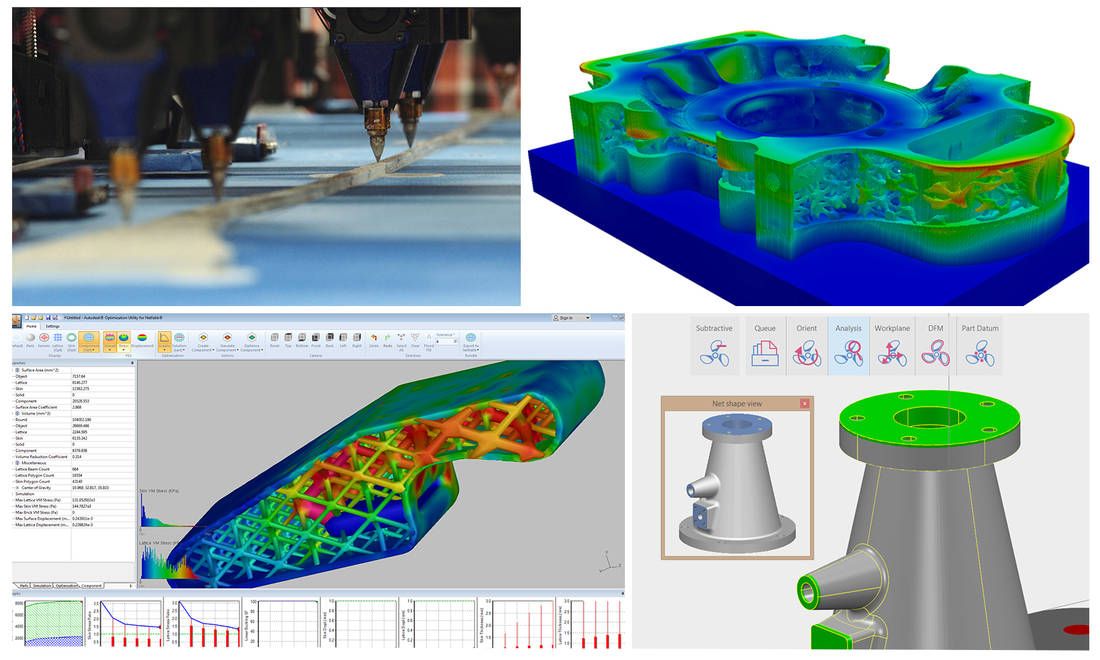
Import STL files created with CAD and drafting software.
Use the preview function to see a scaled view of the print layer by layer and estimate how long it will take to print.
Then transfer files via USB or Wi-Fi to your Ultimaker or save them on a MicroSD card.
Ultimaker Cura is a free, easy-to-use 3D printing software trusted by millions of users. Ultimaker Cura prepares your model for 3D printing.
It translates 3D models into instructions your printer understands.
Better instructions mean better prints, so a simple software upgrade makes all the difference.
Features Cura, the 3D printing software you can download for free from Ultimaker’s website, has been a significant force in the DIY 3D printing economy, especially among educators and makers.
Although it’s primarily meant as a production tool, its ease of use has made it attractive to those who want to experiment with 3D printing without investing thousands of dollars in kits and printers.
Here are some key features of Cura: Automatic support structure detection.
Using Cura’s automatic support structure detection, you can choose your support material or leave the designs intact. You sliced object build platform.
Suppose you have another computer (or a Mac or Linux machine).
You can export your Slicer creations with another slicer — like Meshmixer – which lets you slice complex models into separate object files, which Cura then imports into the slicing interface.
Smart materials.
Cura comes with four default materials, including PLA filament and PVA glue stick, but there’s also a library of over 100 different types of filament that you can find and use.
ProsI am really a big fan of Ultimaker Cura.
I would also like to thank Ultimaker for providing it for free. For me, it’s the best free slicer available at this moment.
It has a beautiful user interface and works very fast on my computer.
I am using it mainly for PLA, but it also does well on ABS. Cura offers different settings with different speeds, print quality and print time.
Cura offers different settings with different speeds, print quality and print time.
I have used the default setting for PLA, and the quality of the prints is excellent.
You can also add your own settings for different filaments or adjust the existing ones.
The support structure can be easily enabled or disabled and you can choose between standard or emotional build plate support.
There are many other settings available, and all of them are easy to use & understand.
The 3D preview is also perfect, and you can easily view your object from any side while adjusting different parameters and checking how they affect your model before printing it.
4. TinkerCADTinkercad is a free, easy-to-use app for 3D design, electronics, and coding. It’s used by teachers, kids, hobbyists, and designers to imagine, design, and make anything!
An excellent tool for both beginners and experienced makers.
Use Tinkercad to easily create 3D objects that can be laser cut or 3D printed.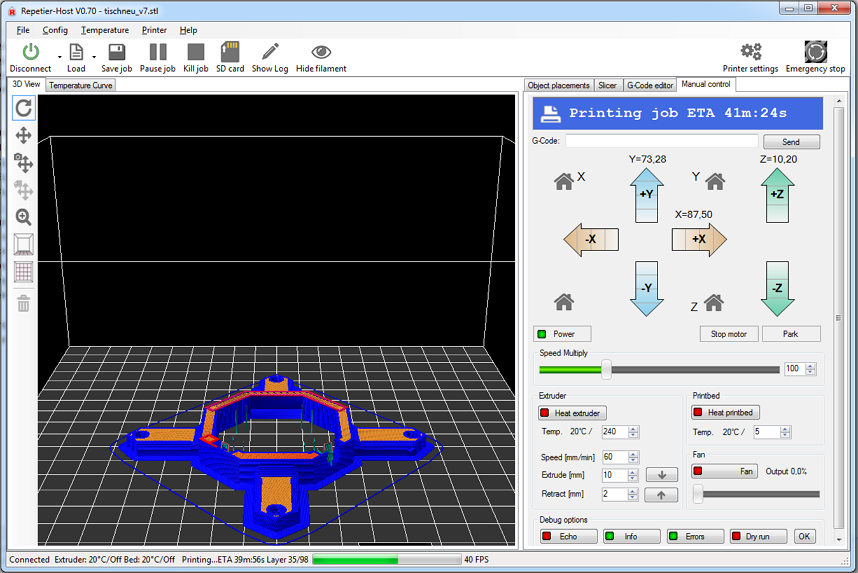
Tinkercad is a quick and easy way to design files for a laser cutter. Start planning your own models in minutes – no experience required!
3D design for 3D printing Beginners and pros use Tinkercad to make toys, prototypes, home decor, Minecraft models, and jewellery – the list is truly endless.
Easy to learn Tinkercad is used by designers, hobbyists, teachers, and kids, to make toys, prototypes, home decor, Minecraft models, and jewellery – the list is truly endless!
Designed for all ages, Tinkercad is an easy-to-use tool for creating digital designs that are ready to be 3D printed into physical objects.
Since it runs in a web browser, you don’t have to download anything to your computer. All you need is an active internet connection.
FeaturesTinkerCAD Features: Simple, easy to use interface Easy to learn for beginners and powerful for advanced users Library of basic shapes, including text and numbers Unlimited extrusion in all directions Grouping, nesting and duplicating objects.
Downloading 3D designs in a variety of formats, including.STL and.OBJ
ProsTinkercad is a simple and easy-to-use online 3D design and 3D printing app for everyone. Tinkercad is used by designers, hobbyists, teachers, and kids. It’s used to make toys, prototypes, home decor, Minecraft models, and jewellery – the list is truly endless!
Tinkercad is free of charge and requires no download. You only need a web browser and an internet connection to get started.
Tinkercad is easy enough for anyone to learn quickly and powerful enough to grow with any skill level.
Designing in 3D has never been easier! With Tinkercad, you can quickly turn your idea into a CAD model for a 3D printer. Try it out today!
5. MeshLabMeshLab is an open-source, portable, and extensible system for the processing and editing unstructured 3D triangular meshes.
The system is aimed to help the processing of the typical not-so-small unstructured models arising in 3D scanning, providing a set of tools for editing, cleaning, healing, inspecting, rendering and converting these kinds of meshes.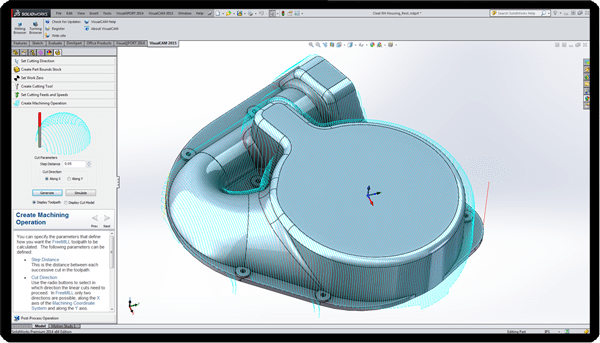
The system is heavily based on the ideas of mesh visibility and mesh layers. In MeshLab, all the parameters needed for the various filters are available in a unique user interface called Floating Panel.
The project’s primary purpose is to offer tools that allow you to process substantial unstructured 3D models without crashing your computer.
We have also tried to make as many as possible general-purpose filters available so that they can be helpful to also to other people.
The project has been developed by the Visual Computing Lab of ISTI – CNR (www.vcg.is.cnr.it) with partial support from the European Community through its Sixth Framework Program (FP6) contract N° 026007 – Visual Media project.
FeaturesMeshLab is an open-source, portable, and extensible system for the processing and editing unstructured 3D triangular meshes.
The system is aimed to help the processing of the typical not-so-small unstructured models arising in 3D scanning, providing a set of tools for editing, cleaning, healing, inspecting, rendering and converting these kinds of meshes.
The main features offered by MeshLab are:
- Processing of unstructured 3D triangular meshes with the automatic repair;
- A set of filters to edit, clean and convert meshes;
- A visual programming interface to combine filters;
- A comprehensive collection of mesh analysis tools;
- Import/export various file formats; Rendering with OpenGL shaders.
Hello and welcome to MeshLab Pros! This is the first of many MeshLab Pro episodes on YouTube.
We’re going to try and put out a new episode every other week, so if you enjoy what we’re doing, please subscribe to our YouTube channel and hit the “Like” button on this episode.
This will help us out tremendously in getting more exposure to these videos. We’ll do our best to keep things short and sweet, but sometimes we can’t help ourselves when discussing 3D scanning technology!
If you have any questions or comments, please leave them below, and we’ll get back to you as soon as possible.
MeshLab Pros:
- Open Source
- Free
- Compatibility
- Customisation *Features
MeshLab
MeshLabthe open source system for processing and editing 3D triangular meshes.
It provides a set of tools for editing, cleaning, healing, inspecting, rendering, texturing and converting meshes. It offers features for processing raw data produced by 3D digitization tools/devices and for preparing models for 3D printing.
Try MeshLab
We earn a commission if you make a purchase, at no additional cost to you.
6. FreeCADSummary
FreeCAD is a general-purpose parametric 3D CAD modeller.
Parametric modelling allows you to easily modify your design by going back into your model history and changing its parameters.
FreeCAD is open-source and highly customisable, scriptable and extensible.
Initially designed for mechanical design, it also provides electrical, fluid, civil and architectural design tools.
FreeCAD is aimed directly at mechanical engineering and product design and fits in a broader range of uses around engineering, such as architecture or other engineering specialities.
It is a feature-based parametric modeller with modular software architecture, making it easy to provide additional functionality without modifying the core system. FreeCAD is based on OpenCasCade.
A powerful geometry kernel features an Open Inventor-compliant 3D scene representation model provided by the Coin 3D library and a broad Python API.
The interface is built with Qt. FreeCAD runs exactly the same way on Windows, Mac OSX and Linux platforms FreeCAD is a mature open-source project developed by a large community of experts.
It can be used right away by anyone interested in 3D modelling.
FeaturesFreeCAD is a general-purpose feature-based, parametric 3D modeller for CAD, MCAD, CAx, CAE and PLM, aimed directly at mechanical engineering and product design and fits a broader range of uses in engineering such as architecture or other engineering specialities.
Its main features are General Completely Open Source (LGPL License), Highly customisable and extensible through its own Python API. Works on Windows, Mac OSX and Linux.
Modular architecture with more than 100 workbenches to choose from. Open Source community supported by a dedicated Foundation.
Parametric modelling allows you to easily modify your design by going back into your model history and changing its parameters.
FreeCAD allows you to sketch geometry constrained 2D shapes and use them as a base to build other objects.
It contains many components to adjust dimensions or extract design details from 3D models to create high-quality production-ready drawings.
ProsCreo makes it easy to create beautiful posts. It’s simple, powerful, and fun! Creo lets you share with friends and family and make your mark on the web.
Creo is built by a small team spread around the globe. Creo was founded by John Doe in 2010.
Creo is the first and only product that combines proven behaviour change methods with cutting-edge technology.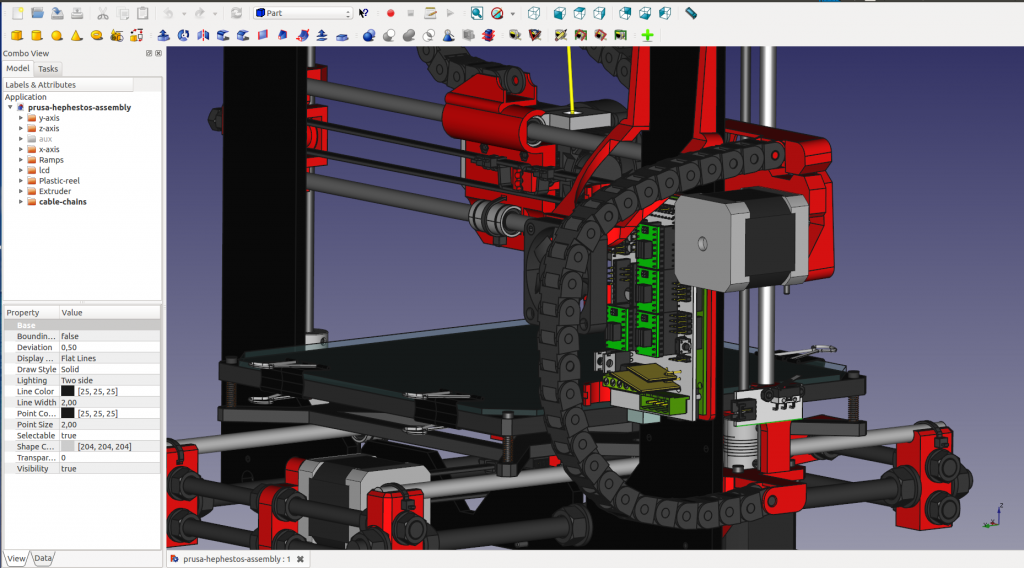
Creo helps you overcome addictive behaviours by providing a supportive community and personalised recovery programs.
7. CreoCreo is a desktop application developed by PTC, Inc. It was acquired by Parametric Technology Corporation in 2010 and later renamed Creo.
Creo is a family or suite of Computer-aided design (CAD) apps supporting product design for discrete manufacturers and is developed by PTC.
The suite consists of apps, each delivering a distinct set of capabilities for a user role within product development. Initially developed as Pro/ENGINEER in 1998, Creo Elements/Pro has been the name of the core mechanical design software in the suite since late 2010.
Other applications included in the suite are Creo Parametric, Creo Simulate and Creo View.
A free version of Creo is available for students worldwide to download called Creo Elements/Direct Modeling Express 6.0.
It is available both as Windows and Linux versions. The latest release is Creo 5.0, announced on April 4, 2018, and was released on May 31, 2018.
The latest release is Creo 5.0, announced on April 4, 2018, and was released on May 31, 2018.
Creo is a set of software applications used to design products. It uses a parametric feature-based technique to create models and assemblies.
It uses the open JSON (JavaScript Object Notation) standard for its 3D manufacturing format, allowing greater interoperability between applications.
The latest version of Creo (Creo Parametric 5.0) was released in April 2017.
Features
In this course, you are introduced to the Creo Parametric modelling environment. You will learn to create and modify sketched and placed features, including datum features.
You will use patterned, mirrored, and copied features. You will also create reference geometry by using construction geometry and reference sets.
ProsHi there, I’m a paragraph. Click here to add your own text and edit me. It’s easy. Just click “Edit Text” or double click me to add your own content and change the font.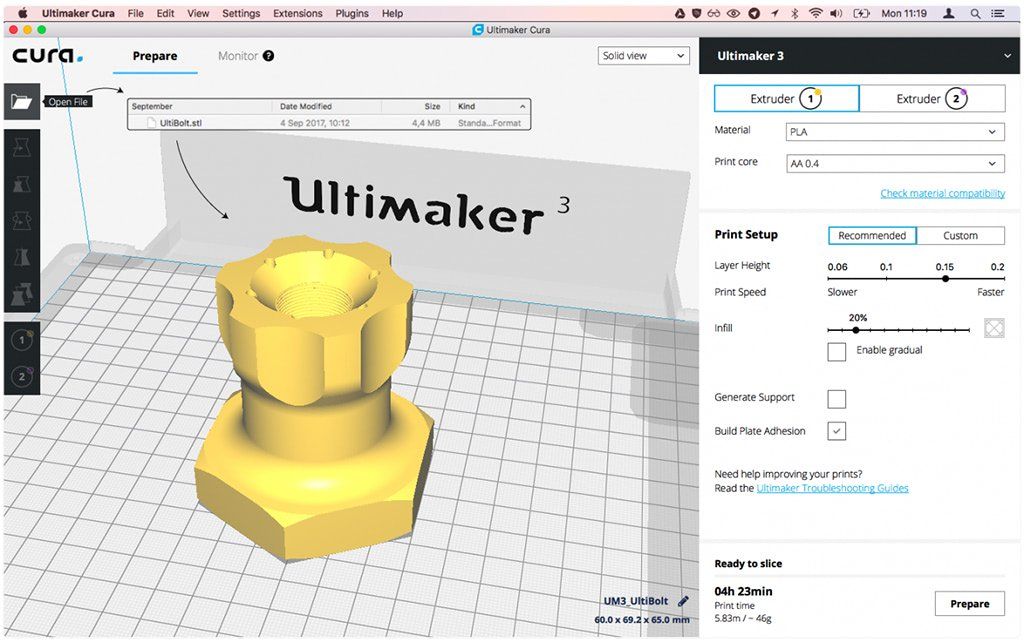
Feel free to drag and drop me anywhere you like on your page. I’m a great place for you to tell a story and let your users know a little more about you.
This is a great space to write long texts about your company and services. You can use this space to go into a little more detail about your company.
Talk about your team and what services you provide. Tell your visitors the story of how you came up with the idea for your business and what makes you different from your competitors. Make your company stand out and show your visitors who you are.
A picture is worth a thousand sales. An image speaks volumes about your brand. We love hearing about your projects, big or small!
High definition images can make your products stand out from the crowd. Our goal is to help you show off your products in their best light.
8. SolidworksSolidWorks is a solid modelling computer-aided design (CAD) and computer-aided engineering (CAE) computer program on Microsoft Windows. SolidWorks is published by Dassault Systèmes.
SolidWorks is published by Dassault Systèmes.
According to the publisher, over 2 million engineers and designers at more than 165,000 companies were using SolidWorks as of 2013.[2] Also, according to the company, the fiscal year 2011–12 revenue for SolidWorks totalled $483 million.
The company was founded in December 1993 by Massachusetts Institute of Technology graduate Jon Hirschtick.
Hirschtick used the $1 million he had made while a member of the MIT Blackjack Team to set up the company.
Operating later from Concord, Massachusetts, SolidWorks released its first product SolidWorks 95, in November 1995. In 1997 Dassault, best known for its CATIA CAD software, acquired SolidWorks for $310m.
The company had been able to raise $45m before the acquisition.
Jon Hirschtick stayed on board for the next 14 years in various roles. Under his leadership, SolidWorks grew to a $100m revenue company.
Under Dassault Systèmes, SolidWorks became mainstream software with an estimated 300,000+ users [4
FeaturesSolidworks is the leading 3D software used by engineers and architects, but it’s also an excellent program for designers and artists.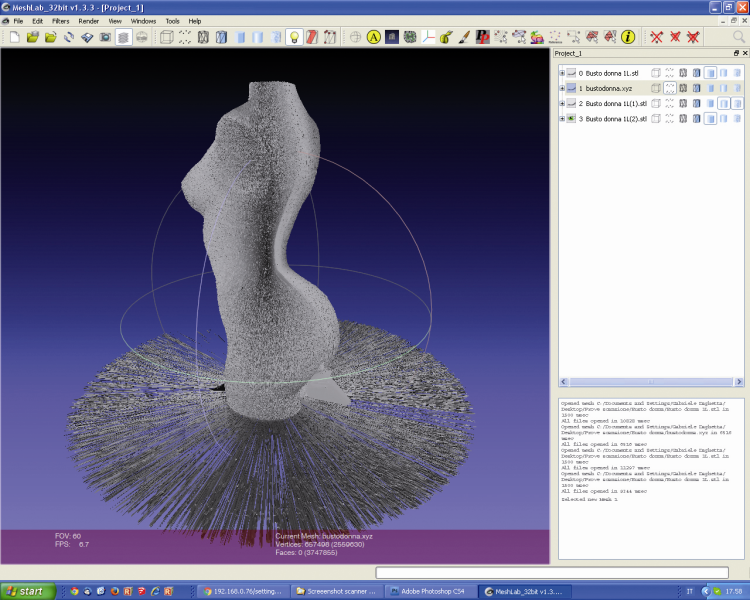 It’s available on Macs, Windows PCs and Linux computers.
It’s available on Macs, Windows PCs and Linux computers.
SolidWorks features include:
- Many design tools helps you create everything from complex engineering drawings to photo-realistic artwork.
- A powerful CAM system allows you to create highly intricate models that can be accurately duplicated.
- A powerful yet easy-to-use 3D solver allows you to find the optimal solution in your designs without trial and error.
It’s an excellent time to be a CAD user. (That even rhymes!) The past year has seen an explosion of innovation in the CAD software space, with updates and new releases that have improved performance, increased usability, and added significant new capabilities.
Here are my top 5 favourite things about working in CAD today.
- Beginner’s Mode
- Parameter Manager
- Cloud-based Documentation
- Subscription Licensing
- Inventor Fusion
Solidworks
SOLIDWORKS is used to develop mechatronics systems from beginning to end. At the initial stage, the software is used for planning, visual ideation, modeling, feasibility assessment, prototyping, and project management.
Try Solidworks
We earn a commission if you make a purchase, at no additional cost to you.
9. CATIACATIA (an acronym for computer-aided three-dimensional interactive application) is a multi-platform CAD/CAM/CAE commercial software suite developed by the French company Dassault Systèmes.
CATIA is the world’s leading solution for product design and experience.
It is used to design, simulate, analyse, and manufacture products in various industries, including aerospace, automotive, consumer goods, and industrial machinery, just to name a few.
CATIA is available on Microsoft Windows 64 and 64-bit environments and can be acquired as part of the Dassault Systèmes’ Product Lifecycle Management (PLM) Digital Product Experience (DPE), featuring the 3DEXPERIENCE platform.
CATIA (Computer Aided Three-dimensional Interactive Application) is a multi-platform CAD/CAM/CAE commercial software suite developed by the French company Dassault Systèmes.
CATIA supports multiple stages of product development (CAx), including conceptualisation, design (CAD), engineering (CAE) and manufacturing (CAM).
The CATIA software was initially developed in 1977 by French aircraft manufacturer Avions Marcel Dassault and marketed as the Dassault Systemes product.
FeaturesCATIA Features The CATIA V5 Help Center provides you with a complete list of the available commands.
These command groups are organised into feature types, as shown below: 3D Sketcher 3D Wireframe and Surface Design Assembly Design Drafting Generative Shape Design.
ProsThe world’s first and most widely used 3D design software, CATIA has been at the centre of innovation for designers and engineers for over thirty years.
Dassault Systemes, CATIA’s parent company, makes 3D design models that create 2D drawings which can be used to build or manufacture anything from an aeroplane to a personal computer.
Companies and industries using CATIA include Airbus, Boeing, Coca Cola Ford Motor Company, Honda Motor Company, Mercedes-Benz Nasa Nissan Motor Company Proctor & Gamble.
10. OpenSCADOpenSCAD is a 2D/3D and solid modelling program based on a Functional programming language used to create models that are previewed on the screen and rendered into the 3D mesh, which allows the model to be exported in a variety of 2D/3D file formats.
A script in the OpenSCAD language is used to create 2D or 3D shapes.
This script is an accessible format list of action statements. The model is previewed on screen and rendered into the 3D mesh, which allows the model to be exported in various 2D/3D file formats.
The script is simply a list of action statements; you can easily modify it with any text editor to change your design.
OpenSCAD provides two main modelling techniques: First, there is constructive solid geometry (aka CSG), and second, there is extrusion of 2D outlines.
As data exchange, direct import of DXF files and DGN files (using Teigha File Converter) for 2D designs and 3MF files for both CSG trees and triangle meshes are supported.
FeaturesFeatures OpenSCAD is a 2D/3D and solid modelling program based on a Functional programming language used to create models that are previewed on the screen and rendered into the 3D mesh, which allows the model to be exported in a variety of 2D/3D file formats.
A script in the OpenSCAD language is used to create 2D or 3D models.
11. Rhinoceros 3DRhino can create, edit, analyse and translate NURBS curves, surfaces, and solids in Windows.
There are no limits on complexity, degree, or size beyond your hardware.
Rhino also supports polygon meshes and point clouds.
Rhino is used in the design, engineering, manufacturing, jewellery design, animation, motion graphics, 3D printing, etc.
Use Rhino for: CREATING ANY FORM YOU CAN IMAGINE Rhinoceros 3D is a commercial software used in computer-aided design (CAD), 3D modelling and computer graphics.
It is developed by Robert McNeel & Associates.
The software allows users to create precise freeform NURBS models of any size or shape.
Models created in Rhinoceros can be exported into various file formats, including IGES and STEP, for transfer into other CAD applications.
Rhinoceros is also used as a basis for Grasshopper, a parametric tool that works within Rhinoceros as a plug-in. Rhinoceros was initially developed by David Rutten at Robert McNeel & Associates in Seattle, Washington.
The initial version 1 release was developed by Rutten.
REC Wiki » Best 3D Printing Software in 2022
3D printing is a multi-step process, because you first need to design a 3D model, check it for errors, convert it to machine code, and only then the 3D printer goes into business . In this article, we will share examples of programs that can help at every stage of preparatory work and directly during 3D printing.
Contents:
1. 3D modeling software:
- Tinkercad
- ZBrushCoreMini
- 3D Builder
- SketchUp Free
- Fusion 360
- FreeCAD
- Blender
2. Editing and repairing STL files:
- Meshmixer
- MeshLab
3. Slicers:
- Cura
- PrusaSlicer
- ideaMaker
- ChiTuBox Basic
- Lychee Slicer
- Kiri:Moto
- IceSL
4. Control programs:
- OctoPrint
- MatterControl 2.0
- AstroPrint
5. G-code Visualizers
- UVTools
- WebPrinter
- Gcode Analyzer
- Design Software
1. 3D modeling software
If you are ready to create from scratch, you will have to learn special 3D modeling software. Many of them, especially professional computer-aided design systems, can be expensive investments, but on the other hand, there are plenty of quite capable and at the same time free offers on the market.
Tinkercad
Tinkercad is a browser-based application from Autodesk that is great for no-experience users, even kids, because of its simplicity. In this program, 3D models are built on the basis of basic blocks - simple geometric shapes that are joined together and then "filed" to the finished look. You can also convert 2D vector images into 3D models. Of course, you have to pay for simplicity - in the case of Tinkercad, rather primitive functionality that makes it difficult to create truly complex models. But such a task is not worth it: having gained basic skills on Tinkercad, you can always move on to more complex and more capable programs on our list. nine0003
Official website
ZBrushCoreMini
ZBrushCoreMini is primarily a 3D sculpting tool, especially popular among those who create human and animal figures, computer game characters, comics, and the like. This software is mainly aimed at beginners and users with moderate experience, but at the same time, it is full of impressive features that make the work easier. For example, dynamic tessellation algorithms constantly analyze the surface of the working model and automatically add polygons so that detail is not violated. nine0003
ZbrushCoreMini is offered free of charge and is positioned as an entry-level program for learning and gradually moving to more capable and complex options - ZBrush and ZbrushCore.
Official website
3D Builder
This program was developed by Microsoft and was included with Windows 10 for some time, although now it needs to be downloaded and installed separately. 3D Builder allows you to edit models in STL, OBJ, and 3MF formats, as well as create models from scratch. In this regard, the program is quite primitive, but it is simple and understandable even for novice modelers. nine0003
One of the interesting features of 3D Builder is the ability to simplify meshes by reducing the number of polygons, file weight and processing time in the slicer - useful in cases where the original designer obviously went too far with polygons. Additionally, you can import models from the library and even use Kinect sensors to 3D scan and import models of physical objects.
Official website
SketchUp
SketchUp is a web application with a great combination of simplicity and functionality. The user-friendly interface is intuitive and greatly facilitates learning, and the set of tools is quite diverse even for advanced users - hence the wide popularity of this program. nine0003
The free version was formerly called SketchUp Make, but is now simply called SketchUp Free. It includes everything you need for 3D modeling for 3D printing, just don't forget to download the module for exporting STL files - it's also free. The kit comes with 10 GB of storage for projects in the cloud and access to the 3D Warehouse, a repository with open source user-generated content.
Official site
Fusion 360
Professional CAD developed by Autodesk and famous for its ease of use and advanced functionality. This includes parametric modeling and mesh analysis and load distribution tools, including through generative design with topological optimization. The program is great for those who are engaged in 3D printing of functional products, for example, for industrial applications. nine0003
Some versions of Fusion 360, such as hobby and student versions, are even available free of charge. FreeCAD FreeCAD The program relies on a parametric approach: at any point in history, you can scroll back and make changes to the parameters. The program even includes finite element analysis and a robotic system simulator. nine0003
Official site
Blender
One of the most popular 3D modeling programs, but quite difficult to master. Not the best choice for a novice designer, but a great tool for those who have already gotten their hands on simpler editors. Fortunately, the popularity of Blender has led to a huge number of guides, tutorials, and visual examples published by experienced users for beginner colleagues.
Developers are trying to make the program more convenient without sacrificing functionality: the interface has recently been updated, rendering has been improved, and 3D design and animation capabilities have been expanded. And yes, it's open source and freeware, so you don't risk anything. nine0003
Official site
2. Editing and repairing STL files
If you find an interesting 3D model on the Internet, this does not mean that it can be immediately sent to a 3D printer. Many models are created for completely different needs, such as animations or video games, and in principle are not intended for 3D printing. But there is a solution: before processing such models into G-code, they must first be repaired so that the slicer can do its job well. The following programs on our list will help you cope with the repair. nine0003
Meshmixer
Meshmixer is an advanced and free program from Autodesk that allows you to view and check 3D models for errors in polygonal meshes that can ruin 3D printing. If such problems are detected, the program can automatically repair meshes. One example of an application is finishing 3D scans to a state suitable for 3D printing.
Additional functionality includes mesh blending, 3D sculpting, surface writing, cavity creation, support branching, mesh smoothing, and more. nine0003
Official website
MeshLab
MeshLab is another open source program for editing polygonal meshes. MeshLab has the necessary tools for editing, checking, cleaning and converting meshes with the ability to combine meshes into one model and patch holes that can lead to incorrect processing of models into G-code.
Official website
3. Slicers
After receiving a 3D model, it must be converted into machine code - a series of commands understandable to CNC machines, including 3D printers. Slicers are responsible for this task - programs that accept digital models (usually in the form of files with STL, OBJ or 3MF extensions), analyze their structure, and then compile lists of actions for 3D printers, called G-code (Gcode). Such lists contain all the information necessary for the equipment: to what temperature to warm up the extruders and tables, whether to use airflow, along what trajectory and at what pace to lay the plastic. nine0003
Cura
Cura is a slicer from the Dutch company Ultimaker, designed primarily for proprietary 3D printers, but open source and compatible with most other FDM/FFF systems. The program is easily customizable with various plugins. Since this is a very popular program, the chances are that it already has a profile with optimal settings for your 3D printer. If not, then nothing prevents you from creating a profile manually or using profiles prepared by other users. nine0003
The program has several levels of difficulty depending on the level of training - basic, advanced, expert and complete. The higher the level, the more access to customizable options. At a basic level, the program takes the bulk of the work on itself, helping inexperienced users.
Cura is constantly being developed and improved through regular updates and is also offered free of charge, although a paid version of Cura Enterprise is available to professional users with licensed plug-ins from the Ultimaker Marketplace, technical support and additional security measures. nine0003
In addition to converting 3D models to G-code, Cura can also take on the role of a control program, but this will require a constant connection between the 3D printer and the computer throughout the 3D printing. Professionals appreciate another feature of Cura - seamless integration with professional computer-aided design systems such as SolidWorks and Siemens NX.
In general, Сura is suitable even for novice users, especially since a huge number of training videos and step-by-step guides are available for this program, both from developers and enthusiasts. nine0003
Official website
PrusaSlicer
3D printer manufacturer Prusa Research, under the leadership of the legendary Czech engineer Josef Prusa, whose designs are copied and refined around the world, has developed its own open source software based on the Slic3r slicer. PrusaSlicer quickly gained popularity as it not only retains the original program's extensive customizations, but also adds a number of useful features not found in Slic3r. nine0003
A redesigned interface, support for Original Prusa branded 3D printers, and profiles with settings to work with many common polymers are just some of the improvements. Additionally, algorithms for generating support structures have been improved, support for multimaterial 3D printing and the ability to dynamically adjust the layer thickness have been added.
PrusaSlicer can process models not only for FDM 3D printers, but also for stereolithographic systems printing with photopolymers. As with Cura, the user can select a difficulty level with appropriate access to fine-tuning. nine0003
Official website
ideaMaker
Raise3D's slicer is optimized for branded additive hardware in the same way that PrusaSlicer is optimized for Original Prusa 3D printers, and Cura is optimized for Ultimaker 3D printers, but this does not mean that it cannot be use with third party systems. The organization of workflows and the interface is somewhat more complicated than in Cura and PrusaSlicer, but on the other hand, ideaMaker allows you to set up individual layers and apply textures for product customization. nine0003
ideaMaker users can connect to the cloud platform and access hundreds of 3D printer profiles and materials created by other operators, or create their own library of settings.
Add the ability to customize support structures, split models for more efficient 3D printing of large parts, integrated mesh repair tools, and OctoPrint compatibility, and you have a flexible, versatile program to suit the needs of most 3D printers. nine0003
Official website
ChiTuBox Basic
This is a specialized slicer for those who use stereolithographic 3D printers that print with photopolymer resins. Most budget LCD masked stereolithography (MSLA) 3D printers rely on motherboards and firmware from ChiTu Systems, which also developed this software.
Users gain control over technology-specific parameters such as layer exposure time, as well as access to predefined profiles with settings for many popular 3D printers. The slicer takes into account such moments as the orientation of the model and the automatic construction of support structures with the possibility of manual optimization. nine0003
Official website
Lychee Slicer
A program from the independent Franco-Belgian team Mango 3D, not associated with 3D printer manufacturers, but with support for many popular stereolithographic 3D printers, including those from Elegoo, Anycubic, Phrozen and Creality.
One of the features of this program is the high level of automation. If you wish, you can simply click on the "magic" button (it's called Magic), and the slicer will do everything by itself: it will orient the model on the platform, generate supports, and so on. Although, here you are lucky: the results are not always optimal, but usually adequate for relatively simple models. Otherwise, everything can be configured manually. nine0003
The program is offered in free and paid versions. The functionality of the free version is slightly reduced, but it has everything you need.
Official site
Kiri:Moto
Browser solution for those who lack computing power. Kiri:Moto can prepare 3D models for both 3D printing and laser engraving or milling. The settings are somewhat more primitive than in locally installed slicers, but are sufficient for most users. nine0003
Official website
IceSL
IceSL is a combination software that combines slicing with 3D modeling. In the left window, you can edit 3D models using scripts in the Lua language, which makes it possible to perform parametric modeling. On the right side, the 3D printing settings are displayed. For beginners, pre-configured settings are available, while experienced users can take advantage of features such as specific adjustment of parameters for individual layers with automatic gradation of intermediate areas. For example, this allows you to gradually reduce or, conversely, increase the filling density of the product as it is built, or gradually change the thickness of the layers. nine0003
Official website
4. Control programs
Control programs are designed for exactly this - managing workflows during 3D printing. Although you can insert a G-code drive into almost any 3D printer and press the start button, this is not always convenient, especially when you have to work with several 3D printers at the same time, and even more so when you do it remotely. This is where control programs come to the rescue. In addition, some of them offer additional functionality, including slicing and even editing 3D models. nine0003
OctoPrint
A web-based appliance that requires connection to a 3D printer via a microcomputer such as a Raspberry Pi equipped with a Wi-Fi module. This system allows you to control 3D printers remotely. OctoPrint accepts G-code from almost any slicer and provides the ability to visualize - view files before and during 3D printing. Alternatively, STL files can be loaded and processed directly in OctoPrint.
OctoPrint not only provides all the necessary tools for remote management, but also allows you to track the work in progress using notifications via various instant messengers. nine0003
This is a completely free, open source program with many plug-ins created by enthusiasts and available on the official website.
Official website
MatterControl
MatterHackers offers its own control program, slicer and 3D editor in one package. MatterControl allows you to directly control and observe 3D printing, slice, export G-code to SD cards for offline printing, and even create 3D models from scratch. The 3D printer will need a Wi-Fi or USB connection to run MatterControl. nine0003
The interface is well structured: on the left side there is a file browser and a library of simple geometric shapes. Interestingly, these shapes can be dragged into the 3D model and used as support structures.
Basic functionality is available in the free basic version, advanced users can pay to upgrade to MatterControl Pro.
Official website
AstroPrint
AstroPrint is a cloud-based management platform that allows you to remotely monitor and control multiple 3D printers simultaneously, store files, convert 3D models to G-code, and track workflow statistics. The functionality ranges from basic in the free version to advanced with different levels of paid subscriptions. nine0003
The 3D printer will require a Wi-Fi module to fully work with AstroPrint. In conjunction with the Raspberry Pi, the system is similar in functionality to OctoPrint: you can process models and send the finished code to a 3D printer via a web interface without the need for additional software. Another plus is integration with popular repositories of 3D models Thingiverse and MyMiniFactory, as well as 3D editors 3D Slash and Leopoly.
Official website
5.
What if you find an old file with a G-code, but you have no idea what it is and why - maybe garbage, or maybe an excellent, but long-forgotten model without a clear marking in the file name? The programs in this section will help you visualize the contents of such files.
UVTools
This program combines file browsing with layer editing and even model repair for stereolithographic 3D printing. The program can also be used as a plug-in for PrusaSlicer, adding support for third-party photopolymer 3D printers - although PrusaSlicer is open source, support for stereolithographic systems is still limited to branded equipment. At the same time, UVTools allows you to print calibration samples to check the exposure time and other parameters, which can be useful, for example, when working with new photopolymers that have not yet been tested. nine0003
Official website
WebPrinter
A simple browser tool for quick G-code preview, developed by the same team that created the IceSL slicer and 3D editor. The application works very simply: follow the link, upload the file with the G-code and see how the 3D printer will grow the model according to the commands provided. Unfortunately, the functionality is limited: for example, the application does not provide information about temperature settings. On the other hand, you can quickly figure out what kind of model is hidden in a file with an incomprehensible name. nine0003
Official website
Gcode Analyzer
An old but still very capable and popular G-code analysis web application. The 3D simulation doesn't work very well, but the 2D and G-code previews work great. In 2D mode, you can conveniently view individual layers, moving from layer to layer and following the construction path step by step using two sliders. G-code viewer displays a complete list of commands, allowing you to see what a particular line of code is doing. nine0003
Official website
Adapted translation of The Best Free 3D Printing Software of 2022 article.
Top Free 3D Printing Software in 2021
How to prepare a 3D model for printing or learn how to create models from scratch? What software is best for beginners? All these questions can be answered in our article. The applications presented in the review are completely free or have free versions for students, teachers and open source projects. nine0003
Why did we put this section before all the others? The answer is very simple. By knowing the whole 3D printing process, you can better understand how each software is involved in the preparation and printing of 3D parts.
If you have become a happy owner of a 3D printer, but have absolutely no idea what to do with it and how to get started, then this part of the article is for you.
Different programs are used to print 3D models:
- 3D modeling/design/CAD software; nine0012
- Software for editing, viewing and restoring STL files;
- Slicing software;
- 3D printer host.
Before you start working, you need to create a 3D model. To do this, you can use different programs for modeling. We wrote in detail about free versions of software for 3D modeling here.
A small life hack for beginners. If you are not ready to create a model on your own, you can choose and download the right one from the marketplaces. There are also free download links in the maker communities - sometimes the proposed 3D models can be not only interesting, but also useful. nine0003
Once a 3D model has been created, it must be converted to a printable format. For desktop 3D printers, this is the STL format. Some created or downloaded files have defects that lead to failures during printing. It is for editing STL files that there is special software that helps prepare the model for playback on the printer.
The slicer program helps to convert the STL file into a printer-friendly G-code. The functionality of such programs allows you to split a 3D model into thousands of flat 2D layers, which will be sequentially reproduced on a printer. nine0003
Finally, the 3D printer host provides communication between the computer and the printer. It allows you to receive information for printing, as well as change the parameters of the device in real time via a PC. Often the Slicer and host are combined into one 3D printing software that is supplied by the printer manufacturer.
Dear readers of the 3DToday portal, we want to inform you that a new section "Knowledge Base" has been opened on our LIDER-3D online store website. In this section, we share owls, experience, settings and secrets of the world of additive technologies, go to the section at this link. nine0003
Examples of some already posted articles in the Knowledge Base section: Post-processing of models after 3D printing, 10 calibration models for your 3D printer, How and what 3D printers print, Printing with HIPS plastic, ABS printing settings, Recommendations for Resin Post-Processing HARZ Labs, Best Free 3D Modeling Software for Beginners.![]()
Cura
One of the popular slicer software that comes with all Ultimaker printers. However, its functionality is suitable for use in conjunction with other 3D printers. Since this software is one of the most popular among makers, you can not waste time on profile settings - for most printers they can be found in the program itself. nine0003
The software is designed to change important print settings. Start with the “Recommended” mode to select improved quality settings for your printer and easily adapt to the program.
More precise control of all parameters is possible in the “Custom” user mode. By switching to this mode, you can manage more than 400 different settings.
Cura is not only a simple and intuitive slicer for home users. The software can be used as the main software for your printer, as well as integrated with CAD systems such as SolidWorks or Siemens NX. nine0003
The program is constantly updated and supplemented, which allows you to make 3D printing on your printer better.
►►►Link to office. site Cura
PrusaSlicer
This software is based on Slic3r and, unlike the prototype, has gained great popularity among users. The main difference is a large list of customizable parameters and additional features that make the work more convenient.
An easy-to-use user interface, built-in support for Prusa printers, and multi-plastic settings make it easy to get started with your 3D printer. The slicer also allows you to place additional supports, work with different materials and use smooth features with variable layer height. nine0003
The PrusaSlicer can be used with both FDM and resin printers. Settings panels for users with different experience in 3D printing help to significantly improve the quality of finished models.
A great bonus for those who have worked with Slic3r before - PrusaSlicer supports most of the original features and accepts Slic3r configuration packages when importing profiles.
►►►Link to office. website PrusaSlicer
MatterControl 2.0
MatterControl is a CAD modeling software, slicer and simultaneous host for a 3D printer. With host functions, you can directly control printing by connecting the printer via USB. The program also allows you to cut STL files for export to an SD card for offline printing and, of course, create projects in a separate section of the CAD software.
Structured interface makes it easy to create models and prepare them for printing. A file browser and a library of geometric primitives make it easy to import data into print. Geometric figures can be used as supports, which helps to achieve high quality printing of complex details. nine0003
Advanced print settings and a user-friendly viewer make this software one of the best for comprehensive control of the 3D printing process. In addition to the host and slicer functions, MatterControl has design tools that allow you to design parts. The resulting 3D models are easy to export to a slicer and print. Thus, the program allows you to control the entire process - from creating a model to cutting it and sending it to print.
►►►Link to office. PrusaSlicer 9 website0003
3DPinterOS
3DPrinterOS is a cloud-based program for managing a 3D printer. It combines the functions of a slicer, a host, and an STL file editor. The program can create a print queue, manage the printer and plug-in system based on STL data analysis and recovery applications, and perform cloud slicing.
The free Starter package allows users to download G-codes and send them to print, remotely control the printing process, and get support on a like-minded forum. For a modest fee, you can access additional features, including the ability to collaborate on a project. nine0003
In fact, this program is a universal tool for converting print files to STL format. That is why 3DPrinterOS is suitable for small businesses, education, production and design.
►►►Link to office. website 3DPinterOS
KISSlicer
The abbreviation of this application “Keep It Simple Slicer” can confuse inexperienced users. It's actually quite a complex 3D printing tool. Conflicting user reviews, however, allow us to conclude that the program is popular and has sufficient functionality to work with 3D printers. nine0003
The free version of the program is suitable for most users who work with printers with a single extruder. KISSlicer helps simplify certain aspects of slicing with Profile Wizards for printer-specific settings and Tuning Wizards for optimizing materials. The paid version of the program allows you to work with printers with 2 extruders.
Although the application settings are quite complex, it's worth the effort - the slicer allows you to have full control over the entire printing process. nine0003
►►►Link to office. site KISSlicer
Slic3r
This software is for open source slicers. Its main difference is advanced features that are not found in any other application.
Despite the fact that Slic3r releases almost no updates to its program, it is the base for many other open source software. For example, many programs use 3D honeycomb cavity filling, which is a special merit of the Slic3r developers. nine0003
In 2018, a new version of the software was released with new integrated functions. So, this version has new fill patterns, experimental support for SLA and DLP printers, 3MF format, and USB printing.
On the software website you can find a detailed manual that gives an idea of all the functions of Slic3r. A great bonus of the program is the direct integration with OctoPrint for printing at the touch of a button.
►►►Link to office. website Slic3r
SliceCrafter
Browser-based slicer from the developers of IceSL. Using the program, you can quickly load STL files, cut them, and then prepare the G-code for printing. In the browser program, you can use almost all the options that IceSL offers.
Although many users find this version less powerful, it is suitable for beginners who do not want to set up more complex 3D printing programs.
►►►Link to office. website SliceCrafter
IceSL
IceSL is an excellent tool for 3D modeling and printing. Several working windows allow you to edit the model directly through a Lua script, select different settings for slicing the model, and view the result in real time. Despite the apparent complexity of working with the software, IceSL allows for elegant parametric modeling.
Slicer settings menu allows beginners to quickly and easily prepare a 3D model for printing. In the latest version of the program, it became possible to specify different values for print settings at a certain layer height. All this allows you to make smooth transitions from dense to light filling and gradation of the thickness of the layers from fine to coarse. nine0003
►►►Link to office. site IceSL
OctoPrint
This program is a host for 3D printers that allows you to control printing and change settings. The software also allows you to remotely control the printer using a Wi-Fi module connected to the device.
OctoPrint accepts G-code from almost any slicer, while the host allows you to visualize the received files before and during printing. In addition, cutting files can be done directly in the program, using it as a slicer. nine0003
OctoPrint offers not only a wide range of tools for remote print management, but also several ways to keep track of your tasks. You can set up push notifications or send alerts through different messengers.
The software is open source and has an active user community that offers many plug-ins to extend the program's functionality. On the community page, you can find many add-ons that will be useful when printing. nine0003
►►►Link to office. site OctoPrint
Repetier-Host
Rep-Rap developers favorite host - Repetier is a high performance print management and file preparation software.
Repetier-Host is positioned as a universal software that helps manage printers with a large number of extruders (up to 16 extruders), and also supports almost any 3D printer on the market.
The program has remote access functions through the Repetier Server, which allows you to control your printer through a browser on a PC, tablet or smartphone. nine0003
►►►Link to office. Website Repetier-Host
AstroPrint
Like 3DPrinterOS, this program is a cloud-based solution for controlling and managing your 3D printers. Also, using AstroPrint, you can change slicer settings, manage printer and material profiles. A free account allows you to save print information and access all settings through a browser or the AstroPrint mobile app.
This software is unique in that it is compatible with Thingiverse and MyMiniFactory as well as free versions of CAD software such as 3D Slash and Leopoly. The application also has tools for cutting 3D models with the ability to send files for printing from a smartphone. nine0003
The software will be useful for those who work in large scale networks such as 3D farms, enterprises and universities.
►►►Link to office. website AstroPrint
3D-Tool Free Viewer
3D-Tool Free Viewer is designed to check the structural integrity of STL files and the ability to print a document on your printer. Additional functions, such as "Cross Section" also allow you to look inside the 3D model and evaluate some parameters.
This program can be useful if you want to check your STL file for errors. The user-friendly interface of the software allows you to measure the size, surface area and volume of all parts of the figure, as well as change the distance, angles and radius at the touch of a button. nine0003
For those who do not have sufficient knowledge and experience in CAD, the program offers a quick way to check the STL file and prepare it for 3D printing.
►►►Link to office. website 3D-Tool Free Viewer
MakePrintable
This useful web service allows you to check STL files for errors and fix critical values that may affect printing. Unlike other free programs, MakePrintable gives you complete control over the process. You can choose the level of print quality, make the mesh hollow, fix the polygon count, and even merge multiple targets into one. nine0003
Although the program no longer offers a free version with limited functionality, users may find several ways to use the program. The program has different payment options - for a single file download (about $ 2 per file) or a "Maker" package with the ability to upload up to 30 files per month (monthly price about $ 15).
The advantage of the program is the compatibility of plug-ins with Blender and SketchUp.
►►►Link to office. MakePrintable 9 website0003
Meshmixer
Meshmixer is a super modern and free 3D printing software from the Autodesk family for viewing, checking, editing and repairing STL files. This program helps you identify potential problems and fix them automatically. For example, the program identifies insufficient wall thickness.
The program is positioned as a universal tool for 3D meshes, offering many tools for working with mesh, 3D modeling, surface embossing and others. nine0003
Whether you're trying to fix an STL file, prepare a model for printing, or construct multiple objects, Meshmixer is ideal for all of these purposes.
►►►Link to office. website Meshmixer
MeshLab
MeshLab is an open source application that allows you to edit STL files and also has tools for working with 3D triangular meshes. The software's capabilities help you check, render, repair, and transform meshes, and even solidify models and close holes. nine0003
The application is great for editing 3D models created in CAD. Despite the fact that the latest version was released in 2016, the program is still popular with makers.
►►►Link to office. website MeshLab
NetFabb
NetFabb is a slicing software that includes advanced analysis and recovery of STL files. One of the most powerful tools, NetFabb aims to streamline the user experience by offering support creation, mesh repair, and a wide range of generative design tools. nine0003
The program is free for students, as part of an Autodesk subscription. The 3-year student license allows you to choose one of the following versions:
- NetFabb Standard allows you to quickly prepare a model for printing;
- NetFabb Premium with advanced options for creating grids, supports and automatic packaging of parts;
- NetFabb Ultimate allows you to calculate assembly failures, provides modeling tools, customizable toolpath strategies, and helps automate the process of preparing a model for 3D printing; nine0012
- NetFabb Simulation helps you simulate certain metal printing technologies prior to production.
►►►Link to office. NetFabb site
About programs for 3D modeling, which even a beginner will understand, we wrote in this article. Here are equally useful, easy-to-use, and most importantly, free programs for three-dimensional modeling and 3D printing.
3D Builder
The 3D Builder application offers its users the ability to quickly visualize and edit 3D models. The software helps to create and import files in 3D printing formats. Using simple editing tools, even entry-level users can create 3D images. nine0003
The application has its own extensive library of 3D models. You can also upload an external file or use the Kinect V2 sensor to scan and import a new 3D image. By joining the 3D Builder community and downloading the 3D Printing SDK, you can expand the capabilities of this free program.
►►►Link to office. website 3D Builder
Figuro
This browser-based modeling software combines the accessibility of TinkerCAD with the power of more advanced 3D modeling tools. The program is suitable for those who want to improve their design skills without going too deep into details. nine0003
The creation of objects in Figuro is based on the principle of polygonal modeling - you generate polygons by modifying them and combining them with each other. If you are using the program for the first time, we recommend using additional tools for checking and repairing STL files.
The program has a simple and pleasant user interface. An extensive gallery allows you to evaluate the capabilities of the software and get inspiration for creating new objects.
►►►Link to office. Figuro 9 website0003
Fusion 360
Fusion 360 is a professional 3D modeling CAD program. Unlike other software, the software allows you to cover the entire process of planning, testing and 3D design.
The program has powerful tools for solving industrial design problems. Fusion 360 allows you to simulate the design of objects under design as well as the loads that they will face after commissioning.
Design collaboration, cloud file sharing, and import/export of various CAD file types make the application a pleasure to use. nine0003
Fusion 360 is free for students, startups and hobbyists. At the same time, amateur projects must not be commercial, startup income must not exceed $ 100,000 per year, and the student license of the program is limited to three years.
►►►Link to office. site Fusion 360
FreeCAD
Multifunctional CAD software is great for developing design skills. Parametric modeling software creates models according to the given parameters. The big advantage is the ability to drag and control objects directly with the mouse. nine0003
A feature of this program is the ability to return to the history of the creation of an object and edit its parameters. Despite the fact that the software is free, it has all the necessary tools for full-fledged work.
FreeCAD allows users to draw 2D shapes as a basis for creating additional objects. The program is suitable for product design, mechanical engineering, architecture and other areas.
►►►Link to office. FreeCAD website
OpenSCAD
Unlike other presented programs, OpenSCAD focuses more on the CAD aspect of 3D modeling. The software works as a 3D camillator that reads a script file describing a 3D model and then converts the object into a 3D model.
The open source program is constantly updated with new features. For example, the latest update has a new Customiser panel. Get support and advice on using the application and working with updates in the user community. nine0003
The software does not have interactive components, but it helps to better control the modeling process and control the design parameters settings. OpenSCAD is considered to be the ideal tool for students.
►►►Link to office. OpenSCAD website
Blender
A popular CAD program with a steep learning curve. This software is not the best choice for a beginner, but is ideal for those who are familiar with 3D modeling concepts and want to create more complex models. nine0003
The latest version of the program is more accessible. So the user interface has become more convenient, and a three-dimensional viewing window has also appeared. Eevee's advanced add-ons, real-time renderer, and Grease Pencil for 2D drawing and animation greatly enhance the program's capabilities.


